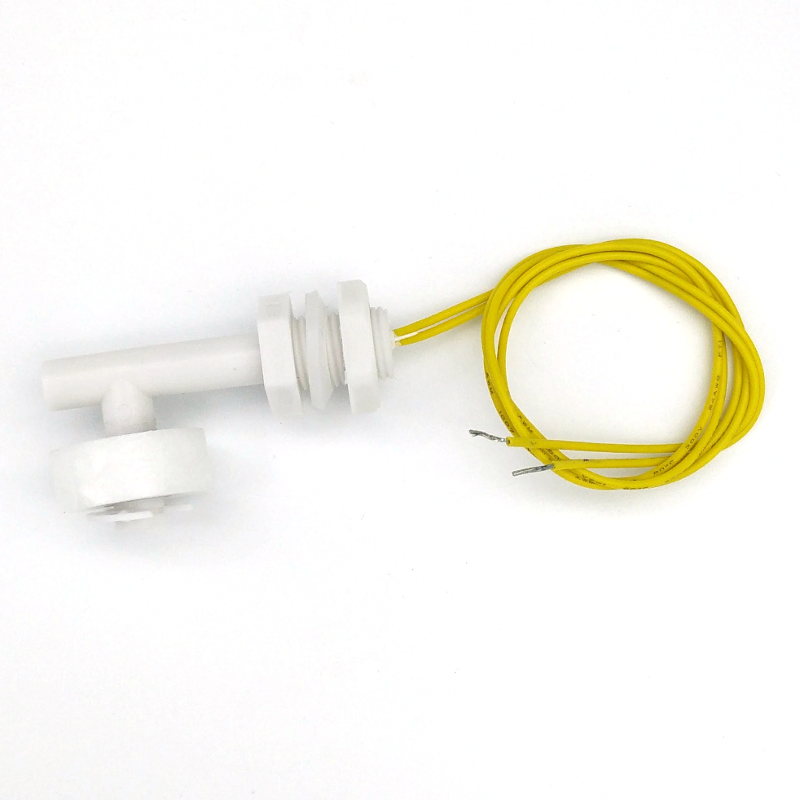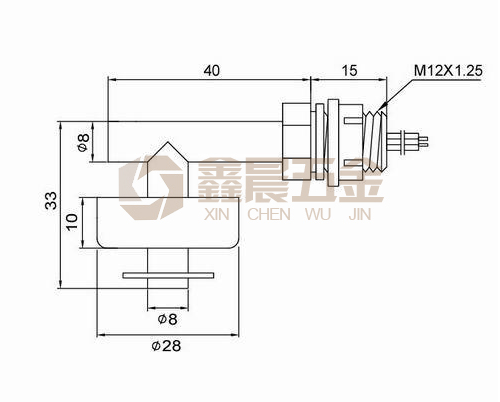
Float Liquid Level Sensor - Horizontal Mount
A float liquid level sensor is used to monitor the level of liquid in a contained area such as a tank. It is widely used in many industries, home and environmental applications. This type of sensor can be used in flood monitoring system, water and wastewater treatment system, farm irrigation system, aquariums and many more.
A typical float level sensor (which behaves like a switch) has two parts: a stem and a float. The stem is stationary and mounted to the wall of a tank. It has a reed switch inside and wires going to the outside of the tank. The float is a doughnut shaped object placed around the stem that rises and falls with the level of the liquid. When the float is at the same level as the reed switch inside the stem, it magnetically actuates the reed switch, sending an electrical signal through the wires to the outside of the tank. This signal can be used to trigger various action for example to activate a pump, an alarm, an indicator or other mechanism for various applications.
This is a horizontal mount float sensor with right-angle stem: it can be mounted at the side wall of a tank, at any height according to your needs. The normal position is when the float is resting further from the top and not floating on liquid. In this case, the sensor behaves as Normally Open (NO) where the two wires outside the tank is not shorted. When the float is raised by the liquid, the circuit becomes closed (two wires connected). You can flip this behaviour to the opposite by mounting the sensor upside down so that it will be Normally Closed and when the float is raised by liquid, the circuit is open.
The stem and the float is made of plastic material (Polypropylene). The stem has a threaded part for the mounting. A plastic nut and an O-ring are included for mounting purpose.
Technical details:
- Contact capacity: 10W
- Max. switching voltage: 100V DC
- Max. switching current: 0.5 A
- Max. contact resistance: 100 mΩ
- Operating temperature: -20 ℃ to 80 ℃
- Mounting size: M12
- Cable length: ~350 mm

